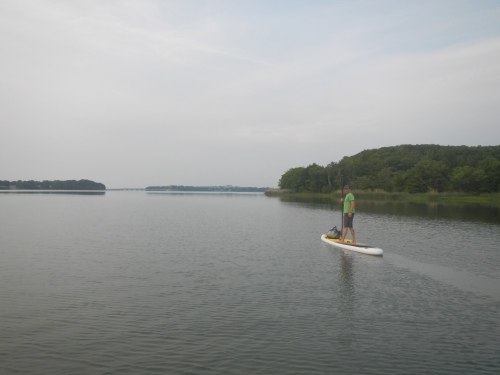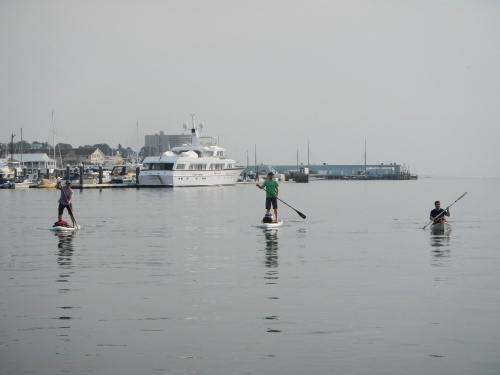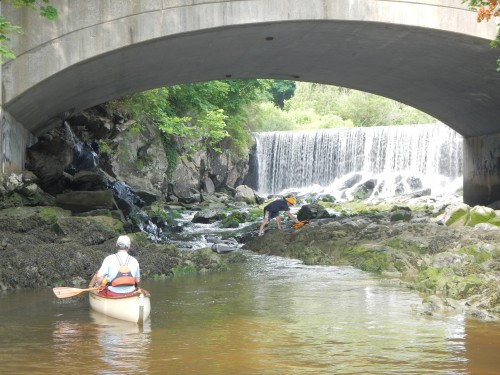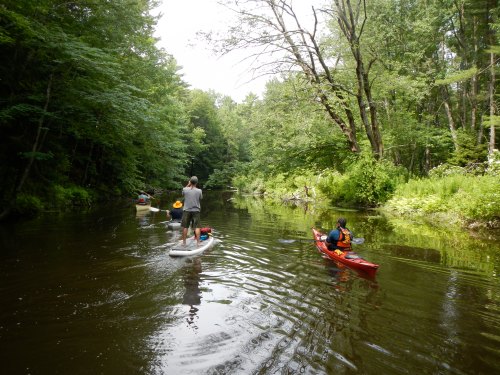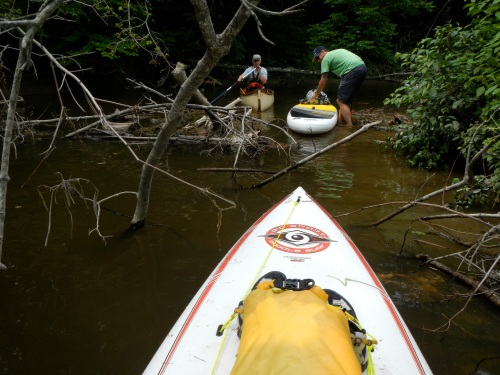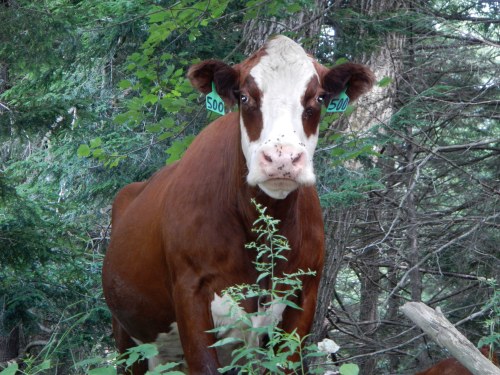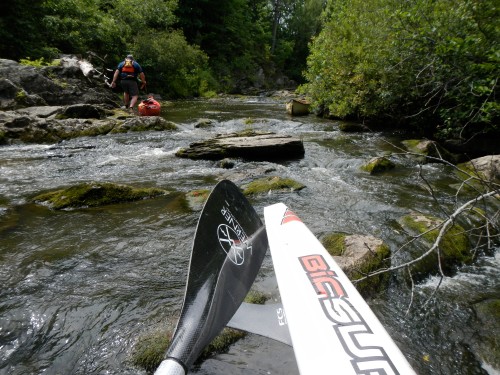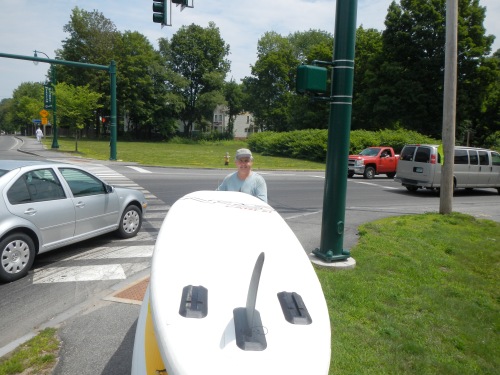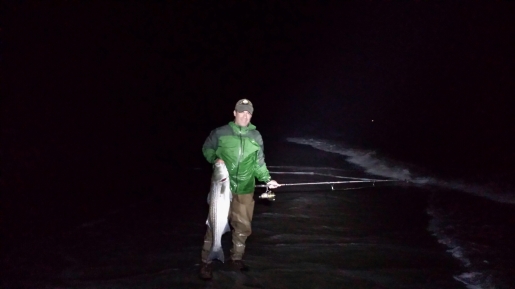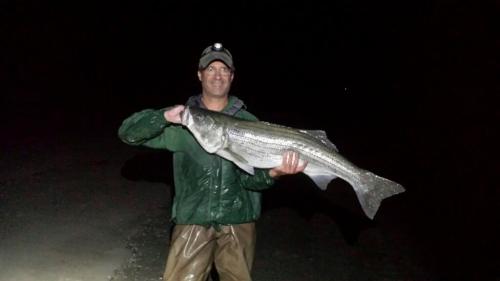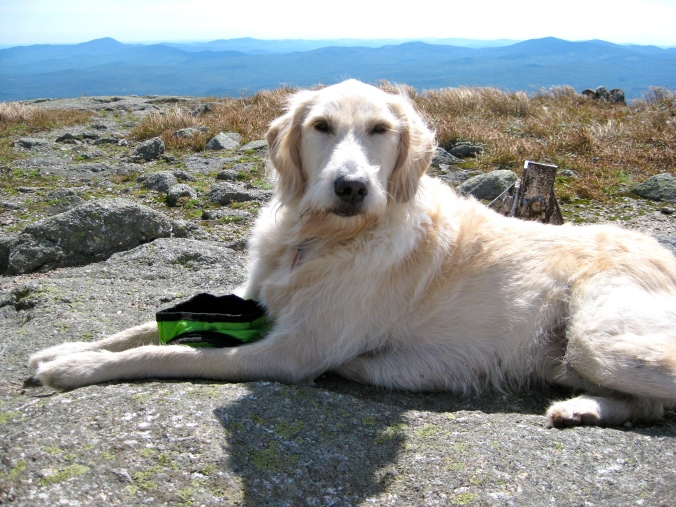The city of Portland, Maine is on a peninsula that juts to the east into Casco Bay like an old man’s chin. To the north is the Presumpscot River and to the south and southwest is an amalgam of Portland Harbor, the Fore River and the Stroudwater River. This abundance of water makes a circumnavigation of Portland on watercraft achievable without too much portaging. It’s a long day, about 25 miles, but it’s a wonderful way to see the city from a unique perspective.
With this in mind, our group of six (3 SUPs, 2 kayaks and one canoe; I was on an NRS Earl 4 SUP) set out at 6 am from a dock on the Presumpscot. We had an outgoing tide to help for the first couple hours. We made quick progress to the East End of Portland.
A quick turn to the west and we were in Portland Harbor proper. It was a bit strange paddling amidst all the typical boat traffic found on a weekday. Luckily, it was still early and there wasn’t too much traffic besides a few lobster boats and a Casco Bay Lines ferry or two.
Now the tide was working against us as we paddled beneath the highway 295 bridge. It was a surreal site of the airport on one side and a sort of industrial wasteland on the other. I’ll admit it wasn’t the most scenic part of Portland but it was an angle that few people get to see. Slowly we made are our way up the Fore River to the outlet of the Stroudwater. Here we needed to make a choice: haul our boats and gear over a small dam or portage around it on nearby Congress St. The decision was based on type of craft. The paddle boarders went over the dam while the kayakers and canoeist used boat carts on the road.
Showing the superior brain power of paddle boarders, we were able to enjoy a mid-morning beer while we waited for the boaters to schlep it up the road. The next few miles were smooth and easy; the river doesn’t have much current, all you had to do was watch out for the submerged stumps that could pitch you off your board. Slowly, the river narrowed and blown-down trees made it more difficult to navigate.
We began to come across giant tangles of trees that were almost impenetrable. We were getting an excellent workout hauling boards and boats over trees and branches. Here’s one particularly humorous episode that gives you a good taste of the action:
We even had an unexpected spectator.
Finally, we arrived at the site of our second—and longest—portage, a 2 mile slog into downtown Westbrook. To get to the road we had to slither our way up a 200 yard stretch of algae-covered rocks with deceptively deep water pools mixed in. This was the most dangerous part of the trip as these rocks were slippery as ice; a fall here would have resulted in almost certain injury.
With two boat carts we were able to stack everything up and wheel it down the road. There were lots of strange looks as motorists took a moment from texting and driving to stare at us like we were from another planet. I don’t think it’s common in Westbrook for people to actually use their muscles to propel themselves, so we were a bit of a bizarre sight.
After a quick lunch of pizza and beer and we were ready to jump into the Presumpscot. The finish of the long portage was through the Sappi paper mill. As a dam owner, they are required to maintain a portage trail to the river. They obviously don’t take their responsibilities too seriously:
After a struggle we burst through the jungle and slid down a muddy slope and into the river like otters. From here it was a simple 6 mile paddle downstream with one portage around Presumpscot Falls. 25 miles and 11 hours later and we were back at the cars, tired but happy.
